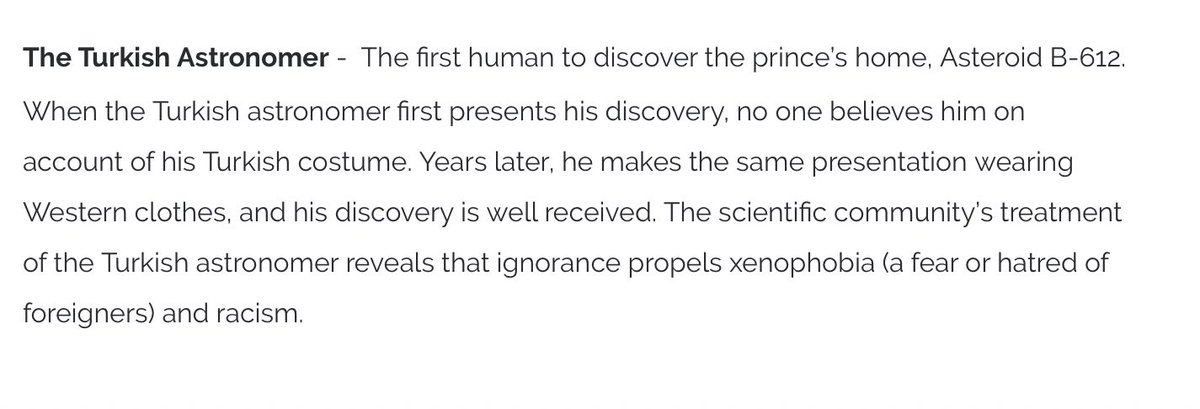One of my teaching activities for the day is discussing (on an online forum) what is specific to global modernity as opposed to premodern global links, and one of my students made a really interesting observation
#globalhistory
#HistSTM
#globalhistory
#HistSTM
One of the texts we are looking at right now is Bayly, Christopher Alan. The birth of the modern world, 1780-1914: global connections and comparisons. Oxford: Blackwell, 2004.
A point Bayly makes in that book is about what he calls “bodily practices,” the fact that certain standards of dress and kinds of food - the suit and tie, rice - become increasingly used globally in the modern period.
This is not unique to Bayly, it’s just what we happen to be looking at right now.
One of my students related Bayly’s comments about European modes of dress being taken up globally to Antoine de Saint-Exupéry’s “The Little Prince” (which I confess I have not read).
She told us about the character in that book The Turkish Astronomer. Here is the @SparkNotes summary  https://abs.twimg.com/emoji/v2/... draggable="false" alt="👇" title="Down pointing backhand index" aria-label="Emoji: Down pointing backhand index">
https://abs.twimg.com/emoji/v2/... draggable="false" alt="👇" title="Down pointing backhand index" aria-label="Emoji: Down pointing backhand index">
You can read that character summary here: https://www.sparknotes.com/lit/littleprince/characters/">https://www.sparknotes.com/lit/littl...
My student linked this to Bayly’s idea that bodily practices, like clothes, were globally becoming more uniform in the period 1780-1914.
In “The Little Prince”, the Turkish Astronomer has to conform to these Westernising globalised standards of dress to successfully presented himself as an expert, and his work as expertise.
As I spend most of my time contemplating earlier periods of #globalhistory and #HistSTM, I wonder what de Saint-Exupéry was up to here.
Is this a comment on a specific situation or incident he knew about?
Or was it a more general comment on how science in the mid-20thC was being claimed as Western European/North American, and experts from elsewhere expected to conform to WE/NA norms in order to be taken seriously?
Modernists, any thoughts?

 Read on Twitter
Read on Twitter " title="She told us about the character in that book The Turkish Astronomer. Here is the @SparkNotes summary https://abs.twimg.com/emoji/v2/... draggable="false" alt="👇" title="Down pointing backhand index" aria-label="Emoji: Down pointing backhand index">" class="img-responsive" style="max-width:100%;"/>
" title="She told us about the character in that book The Turkish Astronomer. Here is the @SparkNotes summary https://abs.twimg.com/emoji/v2/... draggable="false" alt="👇" title="Down pointing backhand index" aria-label="Emoji: Down pointing backhand index">" class="img-responsive" style="max-width:100%;"/>


